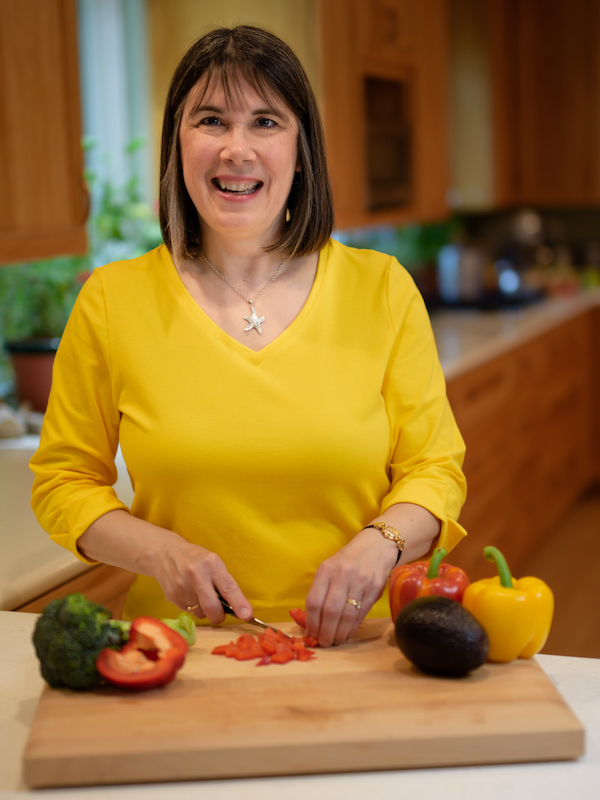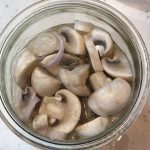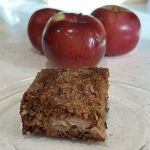
The Cooking Framework Quiz is available by clicking the button below.
Don’t miss an episode!
The button below will take you to Apple Podcasts to subscribe.
Or visit your favorite podcast provider to subscribe.
Thank you!
Transcript
Welcome to The Sensitive Kitchen where home cooks are inspired to Cook to Enable Those You Love to Flourish. I’m Cindy Sullivan, registered dietitian, passionate nutrition, educator, and accomplished home cook. Whether you’re changing how you cook for food sensitivities, allergies, intolerances, or just trying to eat healthier on a budget, you’re in the right place.
Most episodes, I will share favorite recipes as well as modification tips and nutrition benefits. Occasionally I’ll have a guest or special episode like modifying holiday favorites. My favorite foods? They’re raspberries and homemade chocolate chip cookies. My latest cooking project was long fermented sourdough bread,
Hello! Today I have an inexpensive vegetarian dinner option for you, especially if you or a friend has some extra zucchini from an early fall harvest. It is gluten-free and it’s easily made dairy free. It’s also nut free, soy free, fish free, almost free of all major allergens.
Savory zucchini fritters are delicious topped with pesto, sour cream, or jam. This recipe is an easy, affordable dinneror lunch, and it freezes well as an added bonus. They’re even lower in fat and calories than traditional recipes as they’re cooked in a very small amount of liquid oil instead of deep fried.
So some of you are saying, what’s a fritter? [Let me] I did a little research into what fritters are. I did a little looking around the web and the website foodism had a great definition. First of all, it said the word fritters derived from a Latin word, frictura, meaning a fry, and it’s used to describe any type of fried batter concoction, but specifically refers to fruit, vegetable, or even meat that’s battered in fried in oil. The pieces may be solid or minced or mashed, and they may be surrounded by batter or incorporated into the batter itself. This recipe incorporates shredded zucchini into a batter.
According to an excellent article on kitchen.com. A fritter can be made with most any vegetable and a fritter has four main components: vegetables, aromatics and spices, cheese, and a binding agent.
So this recipe has zucchini for the vegetable, chives, or scallions, as well as oregano, maum, basil for the aromatics and spices, feta and Parmesan for the cheese, eggs, and gluten-free flour for the binding agents.
Now, Most cultures have their own versions of fritters. A potato latke, Indian pakoras, Spanish croquetas de jamón or Greek Squash Fritters (Kolokithokeftedes).
Fritters are usually deep fried. However, most home cooks quote, deep fry them in a skillet with a few tablespoons of oil. I tend to cook mine on a griddle, or you can use a frying pan with just a little bit of oil for three reasons.
First of all, there’s less mess and I don’t have to dispose of that Cooking oil properly.
Secondly, I can cook quite a few at a time, usually six to eight of them on a griddle.
And there’s also fewer calories from less oil.
These like most homemade fritters, more closely resemble a savory pancake than a restaurant deep fried fritter.
Before we talk about ingredients and substitutions and preparation,let’s talk a little bit about nutrition. You know, the dietitian in me always wants to know why should I make this? And when I first did the nutrition analysis on these, I was not overly impressed with the contents of just one fritter. However, if you’re going to have a meal, you could easily eat three fairly small fritters.
So for three fritters,you get about
15 grams of protein,
six grams of fiber, which is excellent. It’s about 20 to 25% of the fiber the average person needs in a day
224 milligrams of calcium, which is 20% of the calcium you need in a day.
18% of the B vitamin folate. It’s especially important for women of in reproductive years and older adult
20% of the vitamin E and
18% of the vitamin K.
Hey, these are pretty nutritionally powerful, and as we’re going to talk about in a moment, if you added a graded carrot for a little bit of the zucchini, the beta-carotene will go up, so the vitamin A will also go up.
Ingredients
So let’s talk about these ingredients. Obviously the first one is zucchini. Now you can shred zucchini, and this is one recipe where I actually don’t recommend you weigh it.
I was going to talk about that during preparation, but I mentioned it now. So let’s talk about it. Now, you know that most of my recipes, I’ll encourage you to weigh things and do them by weight. However, what I’ve discovered over the years is that zucchini differs a lot in how much it weighs for what volume, and it depends how much water the zucchini has. Different zucchini picked at different stages of ripeness and different stages of irrigation or rain, has a different amount of water in it. So I actually recommend you wash your zucchini, you grate it, and you put it in a measuring cup for about four cups.
Now, one time I was making it and I didn’t really have four cups. I had like three and a half cups,which is probably enough, but I grabbed a carrot, washed it off, grated it, and threw that in as well. And it worked fabulously. So if you don’t have quite enough zucchini or if you want just some variety in it, I am sure that potatoes or sweet potatoes, other root vegetables like beets or parsnips would work great. I just haven’t tried them, but feel free to substitute other vegetables in.
Now, for flour in this recipe, I used a commercial one-to-one gluten-free flour blend. I happen to use King Arthur Flour’s. I also like Bobs Red Mill. Use your own blend if you have one and you desire. But if you’re serving people who can tolerate gluten, white whole wheat flour makes a great fritter,and that’s how I’ve made them for years.
Cheese is the third component or the third ingredient of these fritters. I use a combination of feta and Parmesan. They add a lot of flavor, both of those cheeses to this. And I really like the combination of the two. And yes, I use the less expensive pre shredded comes in a green container, Parmesan. Save your good stuff and your time for another recipe.
Use whatever cheese you desire. You might use a shredded cheese like a cheddar. I do suggest a more flavorful cheese, however, or your fritters might be a little bit too bland.
So this is the only dairy in this recipe, and so if you use a dairy-free cheese,you can have dairy-free fritters easily.
The next ingredient, the fourth ingredient is eggs. And when I first started making this recipe, I increased the eggs as I continued to make them because they were so dry. But I also increased the eggs because it also increased the protein and the nutrients as well as the liquid in this recipe.
Now, I apologize, I have not yet tried the egg substitute in this recipe because egg is really the only liquid [other than a little bit of oil] and binder. So to substitute for eggs in this recipe, I would probably try aquafaba, which is the liquid from a can of garbanzo beans or other canned beans or a flax egg. I would experiment with just like a quarter or a half a batch to see how they come out. And I’m sorry, I have not done that one yet because eggs are really pretty central to this recipe. In terms of flavor.
For herbs and spices, I use a combination of oregano, marjoram and basil, but use two teaspoons of your favorite dried herbs or two tablespoons if you’re using fresh herbs. I also use chives from my garden because about eight months of the year in Michigan, I have chives in my garden. But when I can’t get them, scallions will work also.
And then you need a little bit of oil, whatever kind of oil your family uses for the fritters and a little tiny bit for your pan or your griddle.
Preparation
So for preparation, as I mentioned, you grate your zucchini and or whatever vegetable you’re using and grate it and measure four cups. If it’s a little bit over, it’s okay. If you’re a little bit short, grab a carrot and grate it or whatever else you have, add it to the zucchini and proceed.
Now, I have read a lot of recipes for fritters that talk about salting and squeezing the zucchini in this recipe, you do not need to do that. You’re not going to deep fry the fritters, so it’s okay if there’s a little bit more liquid and you actually can use a little bit more liquid in this batter [until] You are just fine. Just grate the zucchini and make the recipe save both time and energy.
Wash and chop your chives or green onions.
Measure or grate your cheese. Like I said, I used half feta and half Parmesan. And let me give you a tip: I crumble my own feta. I use a really nice moist feta. However, I find that as I crumble it and I put it in a measuring cup, I practically have to crumble it again when I get it out of the measuring cup. So over the years, the tip that I’ve learned is I put a little feta in the bottom of the measuring cup.
I sprinkle a little Parmesan cheese on top of it. I put a little more feta, so I kind of layer the feta in the Parmesan and it keeps them all able to be broken apart much more easily. So that’s my tip of the day for in preparation for this.
Now, if you are using a griddle or a cast iron pan, now is it a good time to preheat that
You’re going to beat your eggs in a large bowl with a whisk or a mixer, add the oil and mix it thoroughly.
[and] It honestly does not matter in which order you add the remaining ingredient ingredients just mix well after each addition. My preferred order is herbs and chives and green onions, so they all get mixed in really well. Then zucchini, then cheese, then flour, but it really doesn’t matter. However, I don’t recommend dumping them all at once and trying to mix them – you’ll be mixing forever.
Add a very small amount of oil to the griddle. I use way less than a teaspoon and use a silicone brush just to spread the oil around. If you’re not using something that is well seasoned or non-stick, you probably need a little bit more oil to prevent this fritter from sticking. I would try another teaspoon of oil if this is the case.
Use a quarter cup ladle or muffin scoop or measuring cup to measure the fritters. Spread them out a little with the back of the ladle until there are uniform thickness. And there are round thickness that looks kind of like a pancake about three to four inches in diameter. And the reason you’re spreading it out is so that they cook evenly.
You’re going to cook the fritters on medium to medium high heat until there are a few bubbles in the middle actually all over and the edges look a little matte instead of shiny. It’s about four minutes or so, but the visual cues of the bubbles and the edges being more done are more important here than the time.
Okay, you may have to adjust the temperature of your pan or griddle if they’re browning too quickly. Flip the fritters and cook another three minutes or so until they’re brown on the second side. Put the fritters on a rimmed baking sheet. I usually put a cooling rack inside mine so that it keeps them up off the baking sheet. And they cool a little bit. They don’t get soggy and then
Enjoy.
Well, how do you enjoy them? We like to top them with either a little bit of jam. We love cherry preserves on these -Yum! a little bit of sour cream. Or a friend gifted me some delicious pesto recently and it was fabulous. Lots of garlicy pesto. Oh, it was so good on these.
What to serve them with?
Tomato-based products seem to pair really well with this recipe, so I like to serve them with my cabbage soup. That recipe is also on food sensitivity kitchen.com.
Tomatoes, onions, and peppers are wonderful. That recipe’s also on food sensitivity kitchen.com or my gazpacho. And this time of year, I love gazpacho.
If you have leftovers, and this makes about 18 fritters, so you’re going to have leftovers unless you’re feeding a big group, store them in the refrigerator in a plastic bag or an airtight container for several days. I usually throw mine in a freezer bag in the freezer if you wanna store them for longer, for a quick meal later in the week.
I owe my inspiration for this recipe to King Arthur Baking Company. I have been making this for years and I have been modifying it for years, so it’s become my own recipe. But they were the ones who initially inspired this recipe. The latest thing I did was totally a gluten-free. As I mentioned, I used a one-to-one gluten-free flour.
But my next trial is going to be with oat flour, just oat flour. To see how that comes out, I would love to hear if you’ve made this recipe, and by the way.
For the complete recipe with all the amounts added to it, go to foodsensitivitkitchen.com/episode062, and I will link to it in the show notes below. That’s for the complete recipe with amounts and pictures and everything so you can see how to do it. And I would love to hear how this recipe came out for you. Also, if you have been enjoying this podcast, subscribe. I’ve got new episodes coming out about every other week, and I would love to have you take care. I hope you have a wonderful day.
And Keep Cooking to Enable Those You Love to Flourish. Bye-bye. I.
Recipes
References
Around the World in 10 Dishes: Croquette and Fritter Edition
https://denver.eater.com/maps/best-croquettes-fritters-denver-boulder-south-federal
foodism
https://foodism.xyz/food-stories/fritters-from-across-the-globe-to-pep-up-your-monsoon
How to Make Fritters Out of Any Vegetable
https://www.thekitchn.com/how-to-make-fritters-out-of-any-vegetable-231408
Kolokithokeftedes: Greek Squash Fritters
https://www.onegreenplanet.org/vegan-food/fritters-from-around-the-world/




